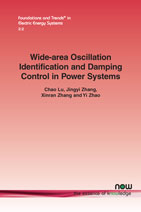Wide-area Oscillation Identification and Damping Control in Power Systems
By Chao Lu, Tsinghua University, China, luchao@tsinghua.edu.cn | Jingyi Zhang, Tsinghua University, China, zhangjingyi91@gmail.com | Xinran Zhang, The University of Hong Kong, Hong Kong, zhangxr@eee.hku.hk | Yi Zhao, Tsinghua University, China, iamrunning@126.com
Abstract
Low-frequency oscillation (LFO) is a phenomenon inherent to power systems and should be carefully considered and dampened to improve the dynamic stability of power systems. With the development of wide area synchronous phasor measurement technology, the measurement results of phasor measurement units (PMUs) and wide-area measurement system (WAMS) can be applied in system identification and the wide area damping controller design to suppress LFO. In this paper, the identification methods and controller design methods of wide area damping control are reviewed. The basic framework for the application of PMU/WAMS results in power system identification and control is introduced first. Both the output response identification and the input-output identification are introduced in the identification section. The offline controller design and adaptive controller design methods are introduced. Practical cases in China Southern Grid and China Central Grid are reviewed as engineering application examples.
Wide-area Oscillation Identification and Damping Control in Power Systems
Wide-area damping control (WADC) has been extensively studied in recent years to suppress inter-area oscillations in power systems. This monograph summarizes the state-of-the-art on WADC design, looking at practical issues, typical off-line and adaptive WADC design methods, and engineering cases. These practical issues include design flow, mode analysis, choice of actuator and feedback, system identification and time delay. Both offline and adaptive WADC design methods are reviewed and compared. It also reviews some interesting WADC engineering cases from around the world.
